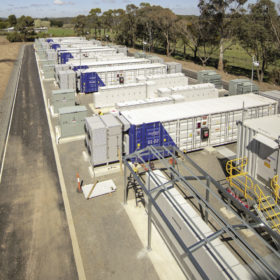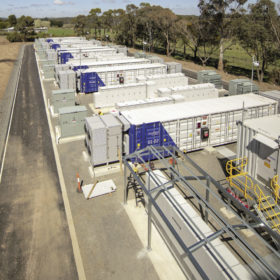China reaches 1.7 GW of electrochemical storage capacity

According to new numbers released by the China Energy Storage Alliance, the country’s storage capacity topped 32.4 GW at the end of last year. The association said the storage market is expected to continue to grow steadily in the years ahead.
China’s electrochemical energy storage market grew 59.4% thanks to 636.9 MW of newly installed capacity last year, according to figures released by the China Energy Storage Alliance (Cnesa) from its Global Energy Storage Project Database.
The numbers show the volume of electrochemical storage in operation reached 1.7 GW at the end of 2019 as China’s cumulative storage capacity, including physical and thermal facilities, topped 32.4 GW.
With the industry body having been involved in preparing storage policy aspects of the looming, 14th national five-year plan, Cnesa’s prediction of further storage-friendly legislation would appear to indicate the sector’s rise is likely to continue.
Overall energy storage growth was particularly strong in China in the last two years, with 8.1 GW of new capacity, of which around 1.45 GW was electrochemical. “The cause of this rapid growth was not just a small base in the initial development stages, but the creation of conditions conducive to industry development,” said the industry body.
Price falls
A manufacturers’ survey carried out by Cnesa indicated the price of lithium-ion batteries fell RMB1,000-1,500/kWh ($141-211) last year.
The alliance claims the success of the sector in the last two years was also due to new provisions for storage development introduced by the Chinese government in 2017. “The refinement of policy related to [grid] ancillary services – energy storage’s primary application – as well as policy developments in regions including Qinghai, Guangdong, Jiangsu, Inner Mongolia and Xinjiang, have created a wave of energy storage construction and development,” said Cnesa.
The association also highlighted the importance of scale and the competitiveness of Chinese storage system providers such as Catl, BYD, Rongke Power and CRRC as key factors behind the recent growth. Despite some reliance on foreign technology, China has developed many mainstream and frontier energy storage solutions.


